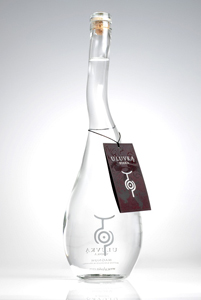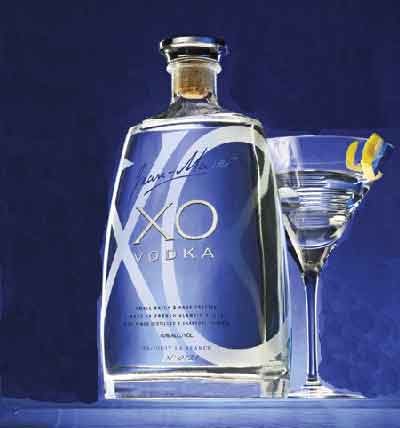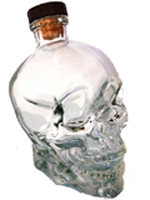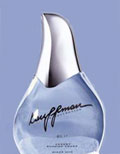Top 10 Pictures That Shocked The World Before 2012
It has often been said throughout time that a picture is worth a thousand words. Any picture may be worth a thousand words, but only a few rare photos tell more than a thousand words. They tell a powerful story, a story poignant enough to change the world and galvanize each of us. Over and over again…
From the iconic images of Omayra Sanchez’s tragic death to the horrifying images of the Bhopal Gas disaster in 1984, the power of photography is still alive and invincible.
Here is my top 10 list of photos that shocked the world:

Carol Guzy, the first woman to receive a Pulitzer Prize for spot news photography, received her most recent Pulitzer in 2000 for her touching photographs of Kosovo refugees.
The above picture portrays Agim Shala, a two-year-old boy, who is passed through a fence made with barbed wire to his family. Thousands of Kosovo refugees were reunited and camped in Kukes, Albania.

Los Angeles Times photographer Carolyn Cole took this terrifying photo during her assignment in Liberia. It shows the devastating effects of the Liberian Civil War.
Bullet casings cover entirely a street in Monrovia. The Liberian capital was the worst affected region, because it was the scene of heavy fighting between government soldiers and rebel forces.

Neal Ulevich won the 1977 Pulitzer Prize for a “series of photographs of disorder and brutality in the streets of Bangkok, Thailand” (Pulitzer.com).
The Thammasat University Massacre took place on October 6, 1976. It was a very violent attack on students who were demonstrating against Field Marshall Thanom Kittikachorn.
F. M. T. Kittikachorn was a dictator who was planning to come back to Thailand. The return of the military dictator from exile provoked very violent protests. Protestors and students were beaten, mutilated, shot, hung and burnt to death.

Miami Herald photographer Patrick Farrell captured the harrowing images of the victims of Haiti in 2008. Farrell documented the Haitian tragedy with impressive black-and-white stills. The subject of “After the Storm” is a boy who is trying to save a stroller after the tropical storm Hanna struck Haiti.

In 2006, Israeli authorities ordered the evacuation of illegal outposts, such as Amona. Oded Balilty, an Israeli photographer for the Associated Press, was present when the evacuation degenerated into violent and unprecedented clashes between settlers and police officers. The picture shows a brave woman rebelling against authorities.
Like many pictures on this list, “The Power of One” has been another subject of major controversy. Ynet Nili is the 16-year-old Jewish settler from the above picture. According to Ynet, “a picture like this one is a mark of disgrace for the state of Israel and is nothing to be proud of. The picture looks like it represents a work of art, but that isn’t what went on there. What happened in Amona was totally different.” Nili claims the police beat her up very harshly. “You see me in the photograph, one against many, but that is only an illusion – behind the many stands one man – (Prime Minister Ehud) Olmert, but behind me stand the Lord and the people of Israel.”

The power of Steve Ludlum’s photos are astounding, and the written description only tends to dilute the impact. The consequences of the second aircraft crashing into New York’s WTC were devastating: fireballs erupted and smoke billowed from the skyscrapers anticipating the towers’ collapse and monstrous dust clouds.

One of the most representative and striking photos of the aftermath of the Indian Ocean tsunami was taken by Reuters photographer Arko Datta in Tamil Nadu. He won the World Press Photo competition of 2004. Kathy Ryan, jury member and picture editor of The New York Times Magazine, characterized Datta’s image as a “graphic, historical and starkly emotional picture.”
“After the Tsunami” illustrates an Indian woman lying on the sand with her arms outstretched, mourning a dead family member. Her relative was killed by one of the deadliest natural disasters that we have ever seen: the Indian Ocean tsunami.

Pablo Bartholomew is an acclaimed Indian photojournalist who captured the Bhopal Gas Tragedy into his lens. Twenty-six years have passed since India’s worst industrial catastrophe injured 558,125 people and killed as many as 15,000. Because safety standards and maintenance procedures had been ignored at the Union Carbide India Limited (UCIL) pesticide plant in Bhopal, a leak of methyl isocyanate gas and other chemicals triggered a massive environmental and human disaster. Photographer Pablo Bartholomew rushed to document the catastrophe. He came across a man who was burying a child. This scene was photographed by both Pablo Bartholomew and Raghu Rai, another renowned Indian photojournalist. “This expression was so moving and so powerful to tell the whole story of the tragedy”, said Raghu Rai.

Pulitzer Prize award winning photojournalist Deanne Fitzmaurice won the highly respected award in 2005 for the photographic essay “Operation Lion Heart.”
“Operation Lion Heart” is the story of a 9-year-old Iraqi boy who was severely injured by an explosion during one of the most violent conflicts of modern history – the Iraq War. The boy was brought to a hospital in Oakland, CA where he had to undergo dozens of life-and-death surgeries. His courage and unwillingness to die gave him the nickname: Saleh Khalaf, “Lion Heart”.
Deanne Fitzmaurice’s shocking photographs ran in the San Francisco Chronicle in a five-part series written by Meredith May.

Frank Fournier captured the tragic image of Omayra Sanchez trapped in mud and collapsed buildings. The eruption of the Nevado del Ruiz volcano in Colombia 1985 triggered a massive mudslide. It devastated towns and killed 25,000 people.
After 3 days of struggling, Omayra died due to hypothermia and gangrene. Her tragic death accentuated the failure of officials to respond quickly and save the victims of Colombia’s worst ever natural disaster. Frank Fournier took this photo shortly before Omayra died. Her agonizing death was followed live on TV by hundreds of millions of people around the world and started a major controversy. May her soul rest in peace…
From the iconic images of Omayra Sanchez’s tragic death to the horrifying images of the Bhopal Gas disaster in 1984, the power of photography is still alive and invincible.
Here is my top 10 list of photos that shocked the world:
10. Kosovo Refugees (Carol Guzy)

Carol Guzy, the first woman to receive a Pulitzer Prize for spot news photography, received her most recent Pulitzer in 2000 for her touching photographs of Kosovo refugees.
The above picture portrays Agim Shala, a two-year-old boy, who is passed through a fence made with barbed wire to his family. Thousands of Kosovo refugees were reunited and camped in Kukes, Albania.
9. War Underfoot (Carolyn Cole)

Los Angeles Times photographer Carolyn Cole took this terrifying photo during her assignment in Liberia. It shows the devastating effects of the Liberian Civil War.
Bullet casings cover entirely a street in Monrovia. The Liberian capital was the worst affected region, because it was the scene of heavy fighting between government soldiers and rebel forces.
8. Thailand Massacre (Neil Ulevich)

Neal Ulevich won the 1977 Pulitzer Prize for a “series of photographs of disorder and brutality in the streets of Bangkok, Thailand” (Pulitzer.com).
The Thammasat University Massacre took place on October 6, 1976. It was a very violent attack on students who were demonstrating against Field Marshall Thanom Kittikachorn.
F. M. T. Kittikachorn was a dictator who was planning to come back to Thailand. The return of the military dictator from exile provoked very violent protests. Protestors and students were beaten, mutilated, shot, hung and burnt to death.
7. After the Storm (Patrick Farrell)

Miami Herald photographer Patrick Farrell captured the harrowing images of the victims of Haiti in 2008. Farrell documented the Haitian tragedy with impressive black-and-white stills. The subject of “After the Storm” is a boy who is trying to save a stroller after the tropical storm Hanna struck Haiti.
6. The Power of One (Oded Balilty)

In 2006, Israeli authorities ordered the evacuation of illegal outposts, such as Amona. Oded Balilty, an Israeli photographer for the Associated Press, was present when the evacuation degenerated into violent and unprecedented clashes between settlers and police officers. The picture shows a brave woman rebelling against authorities.
Like many pictures on this list, “The Power of One” has been another subject of major controversy. Ynet Nili is the 16-year-old Jewish settler from the above picture. According to Ynet, “a picture like this one is a mark of disgrace for the state of Israel and is nothing to be proud of. The picture looks like it represents a work of art, but that isn’t what went on there. What happened in Amona was totally different.” Nili claims the police beat her up very harshly. “You see me in the photograph, one against many, but that is only an illusion – behind the many stands one man – (Prime Minister Ehud) Olmert, but behind me stand the Lord and the people of Israel.”
5. World Trade Center 9/11 (Steve Ludlum)

The power of Steve Ludlum’s photos are astounding, and the written description only tends to dilute the impact. The consequences of the second aircraft crashing into New York’s WTC were devastating: fireballs erupted and smoke billowed from the skyscrapers anticipating the towers’ collapse and monstrous dust clouds.
4. After the Tsunami (Arko Datta)

One of the most representative and striking photos of the aftermath of the Indian Ocean tsunami was taken by Reuters photographer Arko Datta in Tamil Nadu. He won the World Press Photo competition of 2004. Kathy Ryan, jury member and picture editor of The New York Times Magazine, characterized Datta’s image as a “graphic, historical and starkly emotional picture.”
“After the Tsunami” illustrates an Indian woman lying on the sand with her arms outstretched, mourning a dead family member. Her relative was killed by one of the deadliest natural disasters that we have ever seen: the Indian Ocean tsunami.
3. Bhopal Gas Tragedy 1984 (Pablo Bartholomew)

Pablo Bartholomew is an acclaimed Indian photojournalist who captured the Bhopal Gas Tragedy into his lens. Twenty-six years have passed since India’s worst industrial catastrophe injured 558,125 people and killed as many as 15,000. Because safety standards and maintenance procedures had been ignored at the Union Carbide India Limited (UCIL) pesticide plant in Bhopal, a leak of methyl isocyanate gas and other chemicals triggered a massive environmental and human disaster. Photographer Pablo Bartholomew rushed to document the catastrophe. He came across a man who was burying a child. This scene was photographed by both Pablo Bartholomew and Raghu Rai, another renowned Indian photojournalist. “This expression was so moving and so powerful to tell the whole story of the tragedy”, said Raghu Rai.
2. Operation Lion Heart (Deanne Fitzmaurice)

Pulitzer Prize award winning photojournalist Deanne Fitzmaurice won the highly respected award in 2005 for the photographic essay “Operation Lion Heart.”
“Operation Lion Heart” is the story of a 9-year-old Iraqi boy who was severely injured by an explosion during one of the most violent conflicts of modern history – the Iraq War. The boy was brought to a hospital in Oakland, CA where he had to undergo dozens of life-and-death surgeries. His courage and unwillingness to die gave him the nickname: Saleh Khalaf, “Lion Heart”.
Deanne Fitzmaurice’s shocking photographs ran in the San Francisco Chronicle in a five-part series written by Meredith May.
1. Tragedy of Omayra Sanchez (Frank Fourier)

Frank Fournier captured the tragic image of Omayra Sanchez trapped in mud and collapsed buildings. The eruption of the Nevado del Ruiz volcano in Colombia 1985 triggered a massive mudslide. It devastated towns and killed 25,000 people.
After 3 days of struggling, Omayra died due to hypothermia and gangrene. Her tragic death accentuated the failure of officials to respond quickly and save the victims of Colombia’s worst ever natural disaster. Frank Fournier took this photo shortly before Omayra died. Her agonizing death was followed live on TV by hundreds of millions of people around the world and started a major controversy. May her soul rest in peace…





































